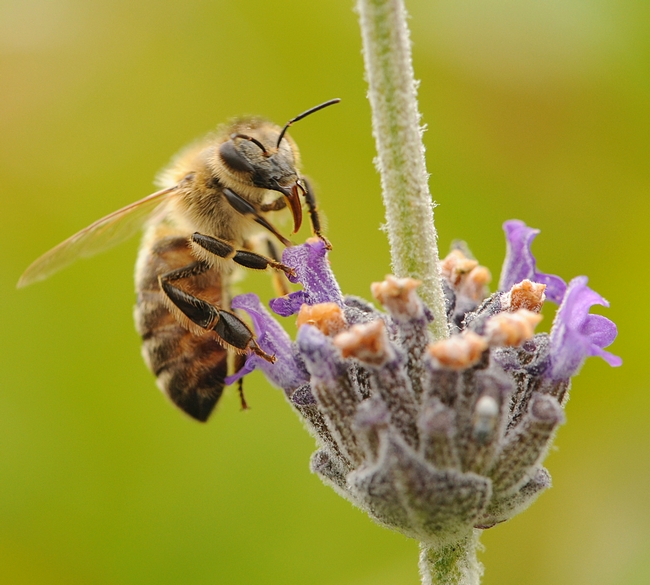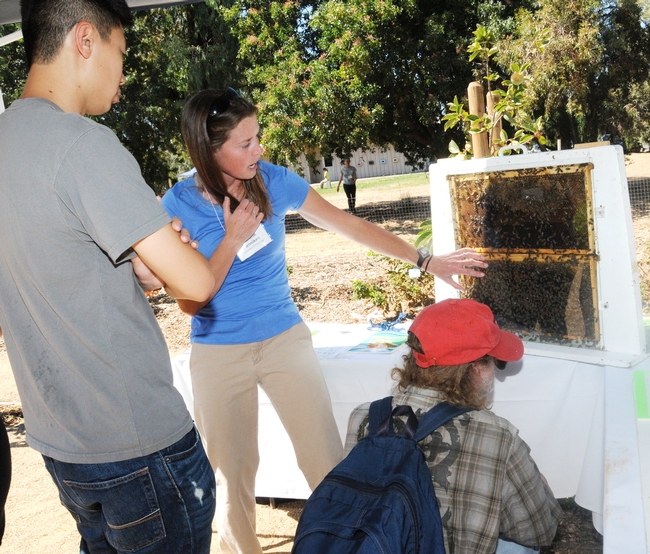Exciting news!
Scientists based at the University of California, San Francisco, have discovered four new honey bee viruses.
Their research, published today in the international Public Library of Science (PLoS) journal, documents what they found in a 10-month study of healthy, commerically managed honey bee colonies.
One virus, the newly named Lake Sinai virus strain 2 (LSV2), predominated. “In fact, we found more than 1 billion LSV2 viral genomes (an approximation of actual viruses) per honey bee in some of the colonies,” said insect virus researcher Michelle Flenniken, a postdoctoral fellow in the Raul Andino lab at UC San Francisco and the Häagen-Dazs Postdoctoral Fellow in Honey Bee Biology at UC Davis.
The virus strain is one of two Lake Sinai strains found among the 431 samples the scientists collected. Both replicate in honey bees, Flenniken said.
Flenniken is part of a seven-member team from the Raul Andino and Joseph DeRisi labs at UC San Francisco that today published “Temporal Analysis of the Honey Bee Microbiome Reveals Four Novel Viruses and Seasonal Prevalence of Known Viruses, Nosema, and Crithidia" in PLOS.
The research, Flenniken said, provides “a baseline for future epidemiological studies aimed at understanding current and emerging threats to honey bees and determining the causes of the declining bee population."
That it does.
"Michelle Flenniken is particularly adroit at explaining these findings and techniques to academic audiences and the general public," said Extension apiculturist Eric Mussen of the UC Davis Department of Entomology faculty. Mussen was not involved with the research.
Knowing that numerous viruses, microbes and mites threaten honey bee colony health, the researchers set out to answer the question: “What is normal microbial flora (virus, bacteria, fungi) associated with honey bee colonies over the course of a year?”
They used cutting-edge technology to document the seasonal incidence and abundance of previously characterized viruses. Their broad-scale analysis incorporated a suite of molecular tools: custom microarray, polymerase chain reaction (PCR), quantitative PCR (qPCR) and deep sequencing. Their work enabled rapid detection of the presence—or absence—of all previously identified honey bee pathogens and facilitated the detection of the four novel pathogens.
The research was primarily funded by Project Apis m., (PAm), a Chico-based non-profit organization established in 2006 by beekeepers and orchardists to fund honey bee research on managed colonies. PAm, headed by executive director Christi Heintz, brings together representatives of the American Honey Producers Association, the American Beekeeping Federation, the National Honey Board, California State Beekeepers Association, and California almond farmers.
This research is all the buzz among beekeepers today, as well it should be--or "bee." (Read more about their work and see photos on the UC San Francisco website and on the UC Davis website.)
Attached Images:

Honey bee nectaring on lavender. A UCSF team just discovered four new honey bee viruses. (Photo by Kathy Keatley Garvey)

Insect virus researcher Michelle Flenniken, the Haagen-Dazs Postdoctoral Fellow at UC Davis, explains a bee colony. (Photo by Kathy Keatley Garvey)